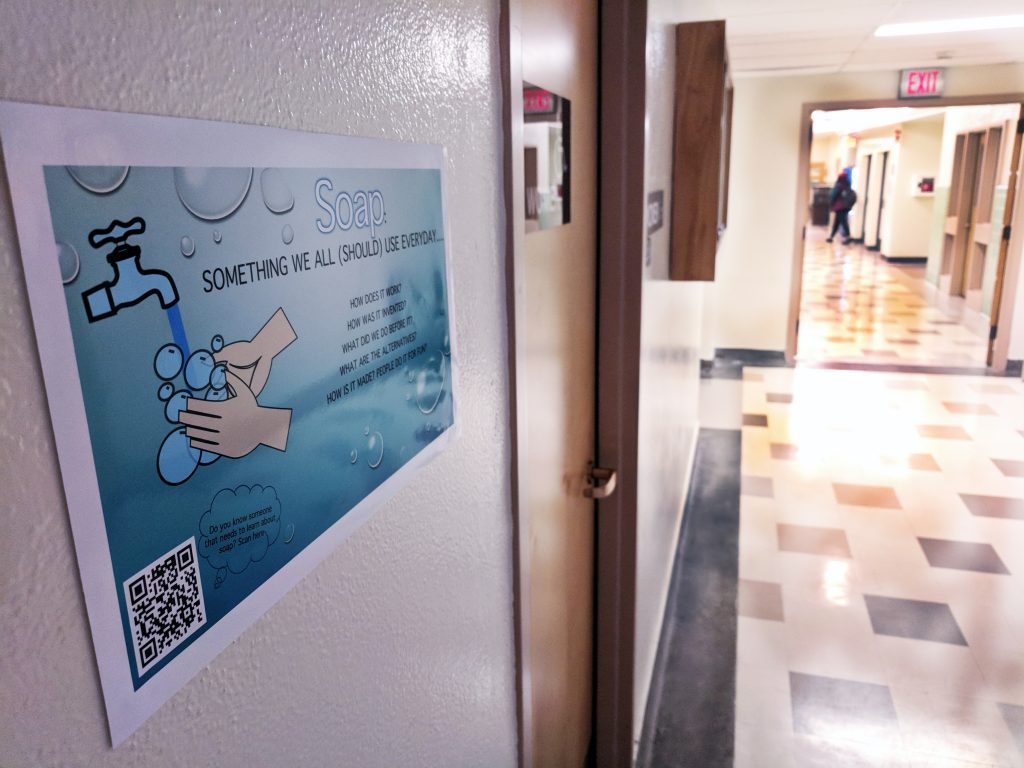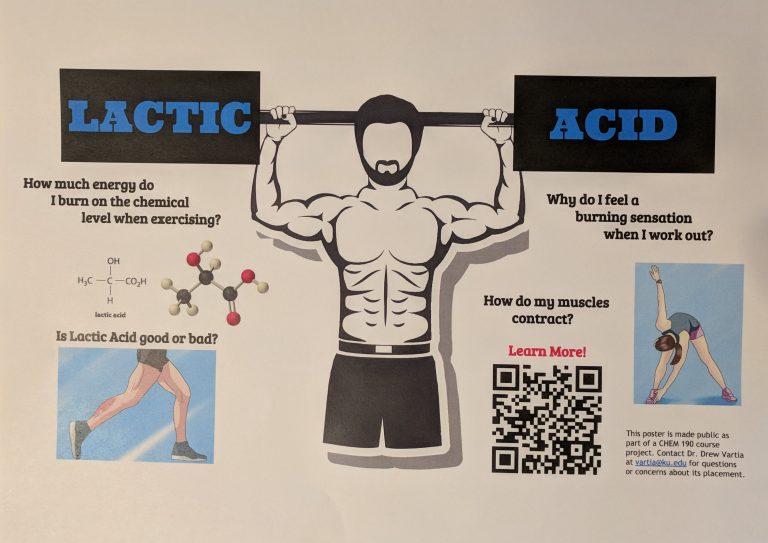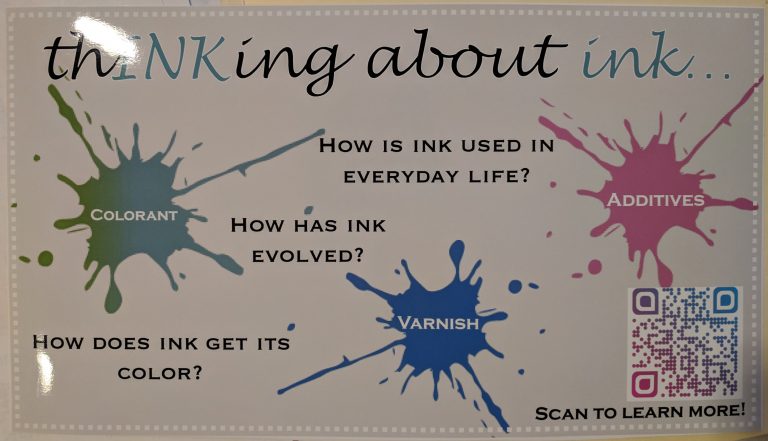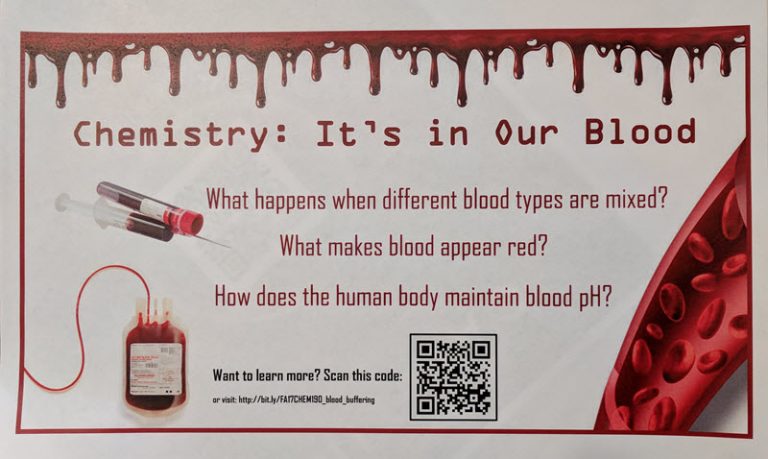By Doug Ward
One poster offers to explain the chemistry of the world’s most popular drug.
Another teases about the fatty acids that make T-shirts feel soft.
Still another promises secrets about the oils used in making the perfect chicken nugget.
None of them offers its secrets outright, though. And that’s just how Drew Vartia, a postdoctoral teaching fellow in the chemistry department, wants it.

The posters were created by the 60 students in Honors Chemistry I, which Vartia worked on with Professor Tim Jackson. The project, Vartia said, was inspired by Rajiv Jhangiani, who spoke at KU in the spring about open education and the use of “renewable assignments” or “nondisposable assignments.” Most work that students complete never go beyond the class. Assignments and tests are created by the instructor for the instructor and are quickly disposed of by instructor and students after the class is over.
Nondisposable assignments, on the other hand, allow students to take their learning into the world or apply it to real-world problems.
Vartia wanted chemistry students to use that approach to help fellow students learn more about the invisible chemical interactions in everyday life.
“Chemistry is something that people tend to shy away from,” Vartia said. “For whatever reason, a lot of people have had a negative experience with it and so they don’t actively see chemistry in their immediate environment.”
So Vartia and the students in Chemistry 190 took chemistry to the people.

To do that, students researched the chemistry of everyday things: caffeine, blood, fabric softener, pigments, cooking oil, limestone, and body odor.
“We asked them to create information about chemistry that would be digestible to somebody who had only a high school chemistry course,” Vartia said. “So in principle their product could teach the public something about chemistry. It was low enough level that somebody could read it and latch onto it, and a high enough level that the person reading it would then further their knowledge of chemistry.”
Once students had completed their explanatory material, they created posters intended to grab people’s attention and try to get them to seek out more information. To assist with that, each poster has a QR code, which allows people to scan with a cellphone and retrieve the information the students wrote.

The posters, created by 15 groups of four students each, then went up in 11 locations where students were likely to find them, including the Kansas Union, The Underground, the Spencer Museum of Art, the Natural History Museum, dorms, and Watkins Health Center. Each poster was tied to some aspect of the location. For instance, one at the Roasterie in the Kansas Union focuses on caffeine, which it referred to as “the world’s most popular drug.” One at Watkins Health Center focuses on the chemistry of blood. One at the Spencer Museum of Art focuses on the chemistry of pigment, and one in the dorms sends people to information about fabric softeners, which release fatty acids that give clothes a soft feel.
Vartia was pleased with the students’ work, but he said they learned a few lessons for next time. The most important is that the posters need to be bigger. The current lot is 8½ by 11 inches, and they are easily overlooked. The other important takeaway is that they need to be displayed earlier in the semester so that students can gather data about viewership before class ends. The assignment was certainly successful, though, Vartia said.

“Traditional writing assignments are typically two-party transactions between the student-author of some research paper and the instructor,” he said. “They do some back and forth and then the utility of the assignment is over. In this case, students were excited that what they were doing mattered to a greater number of people and had the ability to influence people that they’ve never met.”
The posters will remain in place through at least part of the spring semester, Vartia said. If you see one, give it a scan.
Doug Ward is the associate director of the Center for Teaching Excellence and an associate professor of journalism. You can follow him on Twitter @kuediting.